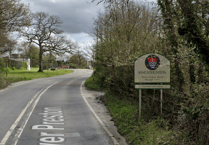NEWTON Abbot is one of the hotspots in Devon for infestations of the highly invasive Japanese Knotweed.
During 2023, the Newton Abbot area recorded 44 infestations compared to 39 in Exeter
With a total of 601 known infestations across Devon, there is one occurrence of Japanese knotweed in every 10 sq km.
Japanese knotweed usually emerges in March or April and grows rapidly to reach up to 2.5 metres in height by mid-summer.
It is identifiable by its hard, bamboo-like canes and distinctive shield-shaped bright green leaves which grow in a zigzag pattern along the stem.
Mature plants flower in August, becoming covered in clusters of delicate tasselled creamy-white flowers.
Knotweed does not produce viable seeds as all the plants in the UK are female, so it is usually spread accidentally through the movement of soil or gardening waste, or via rivers and streams when pieces of rhizome break off and take hold in new locations.
Tackling knotweed costs the UK economy nearly £250 million a year and homeowners are one of the groups most at risk, not only from potential damage to their property, outbuildings and gardens, which can be costly to repair, but also from legal risks arising from encroachment or when properties are sold.
While it isn’t illegal to have knotweed growing on your land, if it is allowed to cross a boundary into an adjacent property, legal disputes can arise between neighbours.
Homeowners are advised to familiarise themselves with what the plant looks like to keep an eye out in gardens and the neighbourhood.
Easily identifiable during summer, through the autumn and into winter, the above-ground growth dies back and it becomes much harder to spot.





Comments
This article has no comments yet. Be the first to leave a comment.